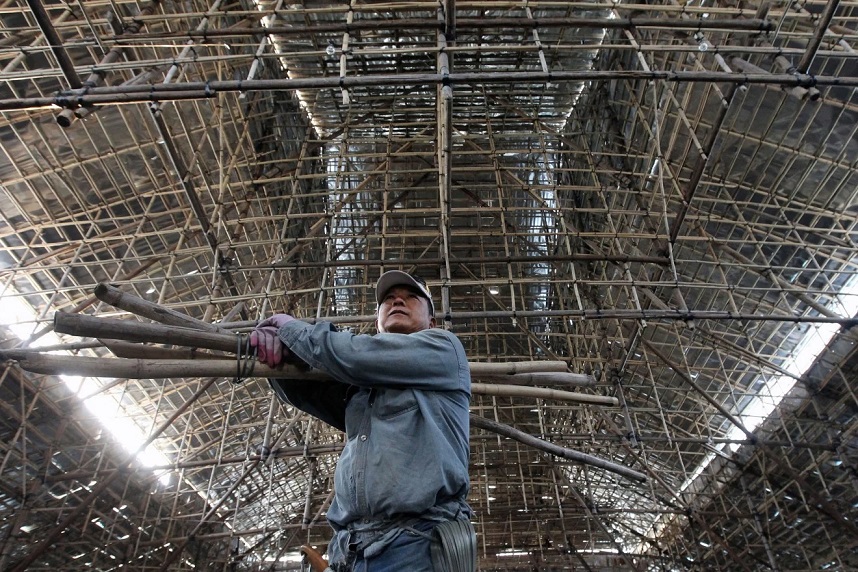The key to achieving now’s fire protection meaning is early spotting and possible loss of a fire before it becomes too deep seated. Unseasonably spotting helps to control the fire before it becomes a serious peril to life and property.
The system is to be practicable at times, with the power pools and electric circuits continuously watched for failure or fault. Sensors and manually operated call- points are grouped in sections and activation of any unit initiates an audible and visual alarm at the control panel and indicating units.
Fire Finding Panel
The fire alarm finding panel on this keel is installed on the Bridge with repeater panels located at the Fire Control Station.
The system consists of a central control and monitoring panel, with repeater panels, a combination of heat, brume and love sensors, bespoke alarm activation points and alarm sounders.
Presently the crew can fast find out where a fire has started. A table is connected to the fire alarm panel concealment, with light inkling, which sections are in alarm. Through this arrangement the crew can take pathway to extinguish the fire with no needless loss of time.
Following is a list of Zones covered by the Fire Finding System
Zone 1 Accommodation Main Sundeck.
Zone 2 Accommodation Boat Deck.
etc
Finding Detectors
There are multihued types of scenting sensors, depending on the area and type of exercise. Depending on the area of operation, the principle used in fire sensors depends on one of the four main characteristics of fire namely
Brume (Aerosols) A fire always produces Aerosols ( bitty molecules). In this type of sensor, an ionization chamber is employed which detects resemblant snippets. It responds yea to the unobtrusive snippets produced in a clear burning fire handed that the viscosity of resemblant snippets is high enough.
Reek ( visible) Visible reek is an lead of fire. Some of the sensors use the principle of light sprinkle on reek snippets to dredge fire. Using a snap sensitive device to dredge reek it’s possible to give an early warning.
Heat Rise in temperature due to heat produced in a fire can be used to dredge fire. Some old type of detectors used wax to separate the connections. The wax melts due to the temperature rise, and the contact is made giving an alarm. The disadvantage of this type of detector is that once the detector is triggered, this had to be replaced. Another type uses a bi- interior contact assembled to make or break an electrical circuit. By using matching partiality, one shielded and one exposed, a rate of rise effect is created which in turn activates the alarm. Curvy partiality can also be used.
Radiation The principle used in these types of sensors is detecting the infra- red/ultra-violet radiation emitted by the fire source. These sensors can be used in places where certain fires produces trueloves right from the threshold.
The succeeding points describes the different principles used in fire unearthing system used on board vessel.
On vessels the trouble of fire itself is really high and there are long times of time when no bone attends certain spaces. It’s imperative to have a discovery system. This is achieved by means of judicious placement of becoming detectors or air sample units.
Fume Sensors
Ionization fume sensors
Principles of Operation
-These are spot type of sensors having a small measure of radioactive material inside the perceiving chamber.
-This radioactive element ionizes the air in the perceiving chamber, so rendering it conductive and permitting a current spate through the air between the charged electrodes.
-When fume dribbles enter the ionization area, they dent the conductance of the air by attaining themselves to the ions, causing a reduction in mobility.
-When the conductance is junior than a predetermined footing, the sensor responds indicating that there’s a fire in a particular chamber.
Photoelectric gauze sensors, Obscuring light principle
Principles of Operation
-The sensor using this principle consists of a light source, a light shaft collimating system and a photosensitive device.
-When gauze motes enter the light shaft the light reaching the photosensitive device is reduced initiating the alarm.
-These type of sensors are shaft type sensors which are used to keep large open areas.
-These sensors are installed with light source at one end and receiver at the other. When this shaft of light is broken by smog specks an alarm is raised.
Photoelectric smog sensors, Light scattering principle
Principles of Operation
-This type of sensor is normally a spot type sensor. The sensor makes use of the principle of light scattering.
-The sensor contains a light source and a photosensitive device so arranged that the light shafts don’t ordinarily fall on the photosensitive device.
-When murk scraps enter the light path, light strikes the scraps and is scattered onto the photosensitive device, causing the sensor to respond.
HEAT Sensors
Fixed temperature sensors, Bimetal type
Principles of Operation
-This type of sensor uses two soul with different number of expansion.
-When both these soul are related together and warmed, the soul with the refined expansion rate bends or flexes towards the soul having the lower expansion rate.
-This action closes the ordinarily open circuit giving out an alarm.
Fixed temperature sensors, Fusible Link Type
Principles of Operation
-This type of sensor uses the fact that certain stuff- composites melt at like low temperature. -he general range available is from 55ºC to 180ºC.
-In this type the sensor consists of a fixed contact blade and a couplet of spring contact held under strain by a fusible composite link. In this condition the electrical circuit is open and the alarm won’t sound.
-When the temperature of the enclosing air reaches the melting point of the fusible link, the spring connections separate and makes contact with the fixed contact blade, completing the electrical circuit and alarm is sounded. The range of operating temperature for this sensor is 57ºC to 102ºC.
-Fusible sensors aren’t nature-righting i.e. once the sensor has been operated the link or fusible meld needs replacing although in ultimate cases this is a nicely straight forward operation. Remember that the sensor is ineffective until stand-in takes place after operation.
Rate of rise type ( usingbi-metal type)
Principles of Operation
-In this type of sensor two resemblant compositionbi-metal strips are used but one is shielded and screened to reduce its rate of expansion.
-Notwithstanding, the strip which isn’t shielded will expand faster than the strip which is shielded and will make close the electrical circuit thereby starting the alarm, If there’s a snappy rise in temperature.
-In some places, due the nature of that area, there may be slight increase in temperature not needs due to fire. In resemblant places, due to slow rate of increase in temperature, both the bimetallic strip will maintain the same distance apart and hence there won’t be an alarm.
-The property in the preliminary point may be prejudicial due to slow burning fires and hence a fixed temperature device is also fitted in this rate of rise type sensor.
ate of rise ( Expansion of Kicks) type
Principles of Operation
-This type of sensor is also known as the curvy sensor as the gas used inside the chamber is normally air.
-The sensor consists of a chamber filled with air and a flexible diaphragm. When subject to heat the air in the chamber expands and applies pressure to the flexible diaphragm. This piecemeal pushes the diaphragm up until it meets the electrical contact, thereby completing the circuit and the alarm is raised.
-A small compensating tongue in the side of chamber is supplied as a rate-of- rise element. -The compensating tongue will allow a certain volume of expanding air to escape, it’ll be precisely calibrated so as to compensate only for expansion caused by the normal and licit increases in the ambient temperature.
-When there’s a whirlwind rise in temperature the air in the chamber expands much more fast than the compensating tongue can release it and as a result the expanding air pushes the diaphragm against the electrical contact on the base of the rate of rise adaption screw. -This completes the electrical circuit and the alarm is raised.
-As mentioned anteriorly yea in this type of sensor, a fixed temperature element is handed – in case of a slow burning fire and the rate of rise element is unqualified to dredge the slow rise in temperature.
Sweetie Sensors
Principles of Operation
-Apart from fume and heat being used to descry fires, in some places darlings can also be used to descry fires.
-Darling consists of three corridor i.e. visible darling, ultra violet beams and infra red beams. -Since Infra red light and ultra violet beams have a particular commonness (25 Hz), the cleanliness unit of the sensor will only allow infrared or ultraviolet beams to pass through and center on the photograph electric cell.
-This signal from the cell goes to the amplifier unit and time detainment unit before passing to the alarm circuit. The time holdback unit minimizes the frequency of false forewarnings due to heating fundamentals and other naked squeezes like from match sticks squeeze or lighting to firebugs for firing boilers, or squeezes from blow illuminant.
Advantages
-The combustion products need not reach the sensor like heat and fog sensor for the alarm to be started.
-This sensor is really useful in open space.
– Really quick in spotting.
Disadvantages
-The presence of steam can reduce the effectiveness of the sensor as steam gives mask over the honey.
-The sensor must see the honey or fire before it’ll raise an alarm. It’ll not be equal to sound an alarm by scenting heat or steam.
Locus of Sensors on board
All fire detectors to be marked on bed plates/ terrace incontinently below with number, which is reflected in the PMS.
Custom-made Activation Points
In addition to sensors, fire alarm can be started from prismatic Custom-made Activation Points put in prismatic region of the vessel. These can be started by breaking the self-protective glass and pressing the alarm button.
Custom-made starting buttons may give a unbroken or interrupted unbroken ringing on the alarm bell. Such an alarm signal must be accompanied by the general breaking point alarm signal sounded on the swoosh.


